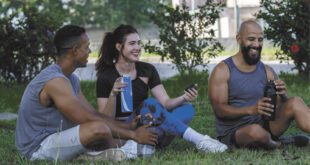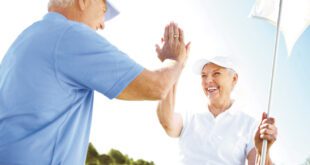Saving Your Brain is a state-of-the-art facility that offers non-drug programs that offer viable solutions for almost any neurodevelop-mental, behavioral, academic, psychological, or mental health issue. Currently we are seeing people from age 2 to age 88 and every age group in between. Some of our younger school age children and young adults we help have been diagnosed with conditions such as ADHD, Dyslexia, Social anxiety, OCD, ODD, and Autism Spectrum. We help children and adults who have been diagnosed with anxiety and depression. We work with people that have auto-immune issues. We help people who have had traumatic brain injuries or strokes. We also help aging adults improve their memory and balance and other symptoms associated with Alzheimer’s.
All of the above conditions except TBI, Strokes, and Alzheimer’s fall under the heading of “Functional Disconnection Syndrome”. There is no pathology in the brain, There is just a functional imbalance between the two hemispheres of the brain. We have found there are several common features in all the conditions that were mentioned earlier. There are some commonalities that are found in every significant academic, behavioral, psychological, or mental health issue. They are the following: retained primitive reflexes, a weakness in one or more of the three major sensory systems that develop and grow the brain – the postural/balance system, the vestibular system, or the oculomotor system, a weakness in either the left or right cerebellum, and a weakness in the opposite hemisphere. The retained primitive reflexes are associated with a hard -wired negative neurobehavior. This can make us a bit “quirky”. Integrating the primitive reflexes makes us less “quirky”. In the case of Alzheimer’s, there has been damage done in certain areas. Even when the brain has been injured, it often can re-route pathways to compensate.
Correcting these imbalances/weaknesses changes the brain’s functions and unwanted symptoms markedly reduce or go away. The corrections occur by having the person do a sensory/motor activity repetitively and frequently, while being stimulated by vibration, electrical stimulation, specific sounds, specific smells and cold laser.
Our brains are divided into some 52 Brodmann areas, named after Dr. Brodmann, who mapped them out over 115 years ago. Each area controls certain brain functions and most of these areas connect to other Brodmann areas forming networks. The network on one side of the brain could be like a 6 lane highway but the corresponding network on the opposite side of the brain may be like a farm road. This imbalance between the hemispheres produces symptoms that we label as things like inattention, poor focus, impulsivity, anxiousness. If we do a specific sensory/motor activity ( an activity that involves us seeing something, hearing something, or feeling something and then reacting to it) – for example like keeping time with our hand or foot to the sound of a cowbell. When it is coupled with sensory inputs of vibration, light, and electrical stimulation on one side of the body, it creates neuroplastic changes in the networks on the opposite side of the brain. Over time, as this sensory/motor activity is repeated the changes become “sticky”, meaning they stick and are now permanent. This is how neuroplasticity in the brain works. Neuroplasticity is the creation of new pathways or expansion of existing pathways.
Think about going to the gym to work out. There are stations for your chest, stations for your back, stations for your legs, stations for your arms, and stations for cardiovascular fitness. When your muscles are fairly balanced you can use a barbell for things like bench press or curls. What happens if you are in an accident and you break one arm and it was in a cast for 8 weeks? You could not use the barbell to lift weights like before because the casted arm is too weak. You would have to build the weaker arm up using dumb bells or pulleys until it got stronger. Then you could use the bar bell again. At Saving Your Brain, we have different stations for working different networks in your brain. We intentionally work only the weaker side to help it “catch up” to the stronger side.
Most people do not realize that Alzheimer’s and dementia are the same. Alzheimer’s is the most common form of dementia accounting or 70% of those afflicted below the age of 71 and 90% over the age of 71. Parkinson’s accounts for the next largest group of dementia.
Alzheimer’s is known for its characteristic beta amyloid plaquing and Tau protein accumulation. The production of beta occurs in many cells and is protective in nature. Beta acts as an antibiotic protecting our precious neurons from infection. It also acts as a binder to heavy metals like aluminum and mercury which are both neurotoxic and accumulate in the brain. Beta production also increases when blood sugar levels exceed normal levels. Beta production is a natural protection mechanism to help protect the brain. However, problems occur when chronic infections persist, blood sugars stay too high for extended periods of time, and heavy metals accumulate in the brain.
The beta amyloid plaquing occurs in an attempt to wall off and protect areas of the brain from the above offenders. Our bodies are built for survival. It is better to die of Alzheimer’s after 15 plus years of plaquing than to be overcome with infection, heavy metal poisoning, and the affects of high blood sugars.
There will never be a magic pill for Alzheimer’s because it has multiple causes and pathways. The key is to make the production of the beta amyloid unnecessary. How do we do that? We do this by identifying chronic infections and correcting these, by identifying environmental toxins and eliminating them from the body, and by controlling our blood sugar levels in the blood.
Alzheimer’s causes a slowing of the left hemisphere of the brain. It often affects not only the frontal cortex but the parietal area, which is the area of the brain that helps connect all the dots. This adversely affects our deductive reasoning as well as our mood. Usually the right cerebellum is adversely affected as well. The cerebellum which controls much of our balance has 51% of all the neurons in the brain! This can be helped.
The brain responds positively to specific light, sound, and vibrational frequencies. The left hemisphere can be speeded up and strengthened. Alzheimer’s has 7 stages. We have seen good results when it is at stage 4 and sometimes stage 5.
How well does it work? It works great! People are amazed by the changes. Please visit our website for more information and view our many testimonials. We are located on Fletcher across from USF.
Saving Your Brain was founded by Kelly Miller NMD who has a background in Chiropractic, Acupuncture, Naturopathy and post graduate studies in Functional Medicine and Neurodevelopmental Brain, and Neurofeedback. His 44 years of experience assessing and treating over 16, 000 patients make him the ideal “Brain Health Coach”. His book, Saving Your Brain: Causes, Prevention, and Reversal of Alzheimer’s/Dementia was an Amazon Best Seller.
3500 East Fletcher, Suite 120,
Tampa, Florida 33613
816-210-6913
www.savingyourbrain.com
info@savingyourbrain.com
 Central Florida Health and Wellness Magazine Health and Wellness Articles of the Villages
Central Florida Health and Wellness Magazine Health and Wellness Articles of the Villages



